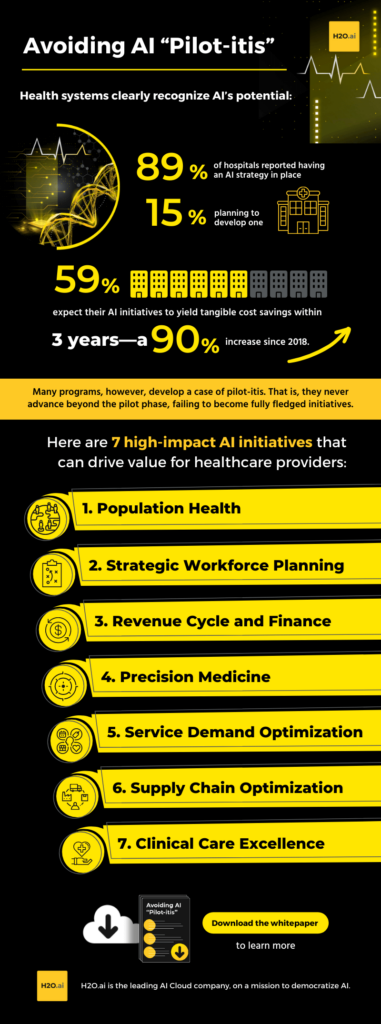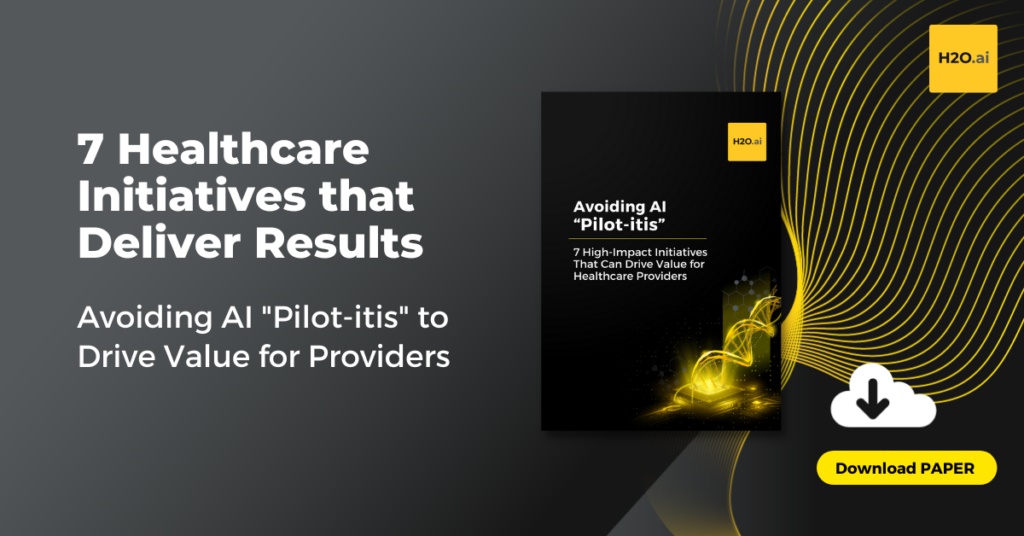From increased clinician burnout and financial instability to delays in elective and preventative care, the pandemic created a perfect storm of conditions that have strained the healthcare system in lasting ways. This storm continues unabated and is unleashing new challenges and exacerbating old ones.
Artificial intelligence (AI) technology is uniquely positioned to help repair the damage, offering tools that enable health systems to predict future healthcare challenges, automate critical workflows, and optimize expenditures and cash flow.
AI is a strategic priority in healthcare
Health systems clearly recognize AI’s potential: In 2020, 83% of hospitals in an Optum AI survey reported having an AI strategy in place, with another 15% planning to develop one. Further, 59% expect their AI initiatives to yield tangible cost savings within three years—a 90% increase since 2018.
Cost savings, increased efficiencies, lower time-to-value for digital transformation
The cost savings are already beginning to compound. We’re seeing this to be true among our own healthcare customers at H2O.ai. A trusted AI partner to more than 20,000 organizations around the world, the H2O AI Cloud platform enables businesses, government entities, nonprofits and academic institutions to make, operate and innovate with AI to accelerate responsible innovation and push the boundaries of what is possible with artificial intelligence. Among our healthcare customers, we are seeing healthcare providers and managed care organizations (MCOs) realize substantial increases in operational and human efficiencies in addition to lower time-to-value for digital transformation initiatives.
Getting stuck in the AI pilot phase
Many programs, however, develop a case of “pilot-itis.” That is, they never advance beyond the pilot phase, failing to become fully fledged initiatives.
While some suffer from being IT or tech-led versus business-led, most struggle with adoption and scalability.
More commonly, hospitals walk past the kinds of high-value and achievable AI initiatives that can create a flywheel of AI adoption. Instead, they end up attempting very ambitious use cases that often require significant clinical validation and adoption by end users.
Accessible & scalable AI for healthcare
The reality is, AI and machine learning are among the most accessible and scalable technologies available for healthcare, and there are innumerable ways to unlock value with AI across every department within a health system.
7 accomplishable AI initiatives to demonstrate results
“We’ve identified seven industry-tested and accomplishable AI initiatives designed to help executives demonstrate swift, measurable results. In this white paper, we reveal how to leverage these initiatives to achieve success with production-grade AI.”
– Prashant Natarajan , VP & General Manager— Health & Life Sciences, H2O.ai














